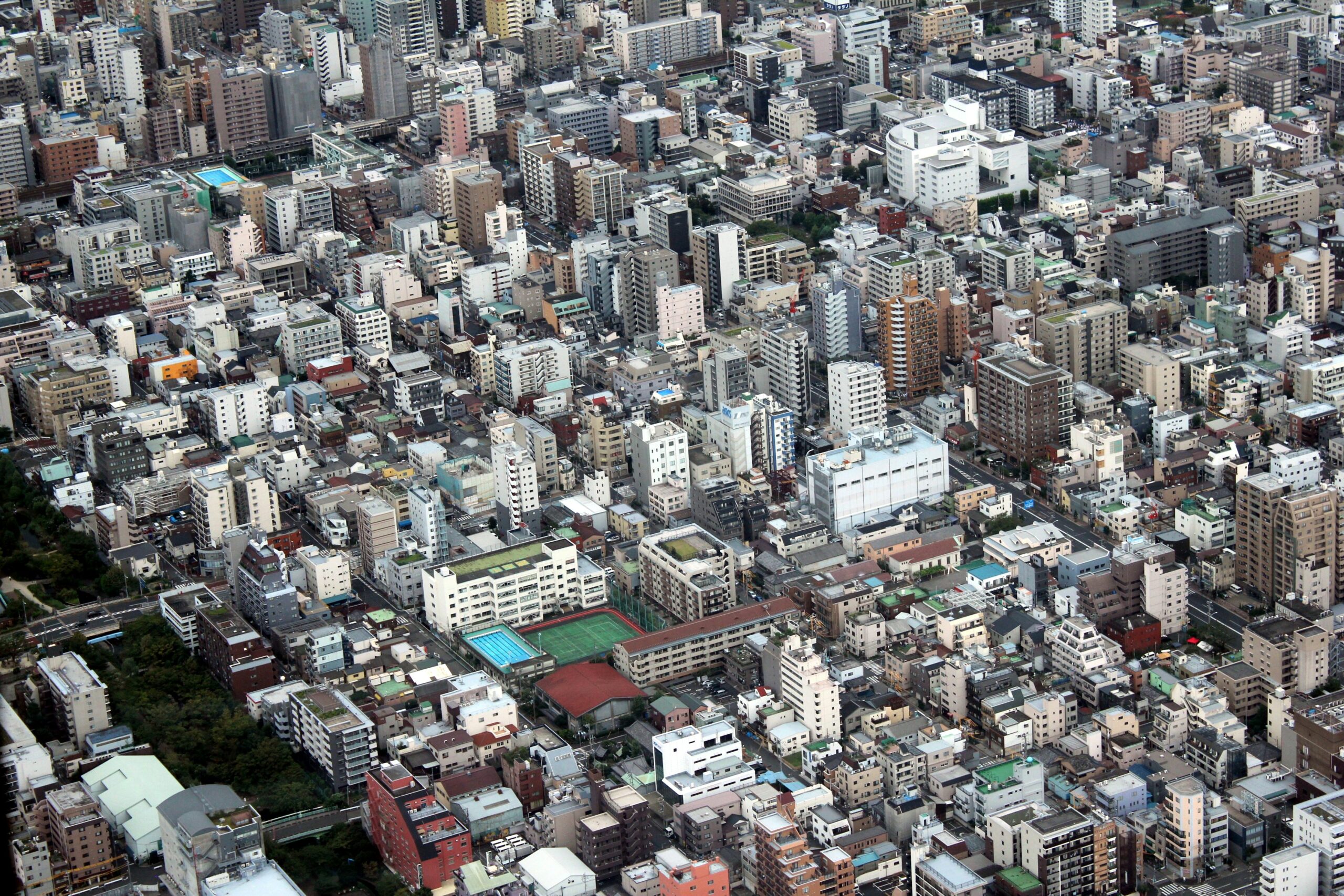The urban state of being refers to the intangible vibe of a city; the moods, the mindsets and the meanings that emerge from the connections and interactions we have with each other and place.
It informs everything; how we treat each other, interact and collaborate, how we govern, what we tolerate and protect, grow, design, build, destroy, mine and manufacture, what is celebrated and what is grieved.
These elements in turn shape the tangible systems; the structures, policies and processes that influence the quality of air, water and food, the design of built environment (on earth and off-planet), public spaces, green infrastructure as well as the cultural life – which in turn impact the moods, the mindsets and the meanings – and so it goes on.
While some of these elements are beginning to be discussed in political, cultural and urban planning arenas, we are far from understanding their interconnectedness or complexity, which is beyond the boundaries of traditional urban disciplines, commanding a transdisciplinary and intersectoral approach across arts and culture, neuroscience, psychology, sociology, anthropology, history, and philosophy.
In the absence of knowledge about the urban state of being, despite best efforts, we will continue to curate cities in a fragmented manner, as author Mary Shelly expressed so eloquently in her novel Frankenstein of over 200 years ago demonstrating the ignorance of bringing together bits and parts to function as a synergistic whole – when it is in fact cities are a dynamic ecology of complex systems, nested in complex systems. The past matters and influences the future, success and failure can cascade in the fascinating butterfly effect of small gestures having huge and unexpected ramifications, When we look, we see that relationships are non-linear, beyond simple cause and effect, and everything is connected through rich networks of interactions and feedback loops – both negative and positive.
The value of anything only exists in its meaning; a word, a gesture, an object, a form, a place, a quest, a city – they only have value because of their meaning. The embodied values, purpose, intentions, stories and culture that is symbolised, represented and expressed.
The notion that place embodies memory is an important context in which to consider the contemporary Australian urban (and rural) psyche and identity. In 1788, as was the way of the time, the British began establishing colonies on land that is now known as Australia, not of conquest, but on the premise that the land belonged to no-one (‘terra nullius’).
The land has in fact been inhabited for over 60,000 years, by over 350 individual nations, each with unique languages, legal structures, cultural stories, belief systems, kindship protocols, arts, architecture, sustainable trade and food cultivation practices. The diverse and complex interconnections and belief systems of these distinctive countries share one principle; deep ancestral and cultural connection to land, nature and place.
Despite the brutality and ongoing devastating impacts of colonialism for Aboriginal and Torres Strait Islander Nations, in 2017 First Nations people from ‘all points of the southern sky’, came together to form the Uluru Statement of the Heart; a call for a Makarrata; a Yolngu word for healing or ‘the coming together after a struggle, for truth telling’; an established traditional diplomatic practice.
This extraordinary demonstration of humility and resilience presents an important opportunity to develop “a much more robust idea of the past from which Australians need not shrink in denial, but which, if wrestled with honesty lays the foundations for a new story of the nation”1 as described by Indigenous Leader Marcia Langton. Equally, it presents an alternative path by which to further galvanise the spirit of supremacy, ignore the brutality of the past and reinforce the denial. Either approach will have an impact on Australia’s state of being, immediately, as well as a legacy.
In the urban context, the interconnectedness and complexity of cities was described in the early 1960s by Jane Jacobs; how over time, buildings, streets and neighbourhoods’ function as dynamic organisms, changing in response to how people interact with them. Jacobs explained how each element of a city – sidewalks, parks, neighbourhoods, government, economy, and global position – functions together synergistically, in the same manner as the natural ecosystem2.
However, in these times of increasing complexity and uncertainty we seem to be ironically dumbing things down. We are amid a data revolution with more information literally at the fingertips of most through our smartphones than any one human can possibly ever hope to digest in one lifetime, yet we don’t have the ability to be informed by it – to make sense of it all and to discern what’s important from what is not.
We are bombarded with narrow, filtered, often misinformation and distracted by all the noise. One of the greatest challenges of these times is not a lack of information – it’s a lack of insight. We need the mechanisms to not only distil and interpret the vast amounts of data and information into knowledge, but to consider and translate that knowledge into genuine insight which generates wisdom.
Cities are comprised mostly of strangers who share a place, people with personal histories, customs and traditions and at times vastly differing values and views of life and the world. Yet, every one of 7.7 billion human beings on the planet, more than half of which live in a city, is wired to automatically synchronise with the mental states of others. Humans are wired to synchronise mentally, physically and emotionally, as soon as we are within range of other neurophysiological transducers of live human interaction3.
Specialised brain cells called mirror neurones automatically respond to what is observed in others and imitate what they are feeling and experiencing4. Not only are all parts of the brain connected, humans are connected to the feelings and behaviours of each other and other living creatures. Mirror neurons may provide the neurological basis of human self-awareness and reciprocity in cities5 and demonstrate how our actions and interactions matter.
This is assisted by other neurons throughout the socio-emotional parts of our brain, and the wonderful resonance of chemicals and electrical information created by eye contact, smiles, voice and even proximity.
Neuroscience also demonstrates that the human brain can register others pain as its own when seeing others in pain or despair, whether physically or emotionally. Empathy triggers a stress response, binding us together in belonging – in urban terms means we are all in this together.
This was poignantly demonstrated recently by New Zealand’s Prime Minister, Jacinda Ardern. The massacre of Muslim worshipers in the Mosques of Christchurch by white supremacists was an attempt to annihilate difference through acts of violent hatred. Ardern’s immediate heartfelt expression and genuine demonstration of empathy, love and compassion, moulded an alternative to difference and othering. Ardern’s reference and demonstration of New Zealand’s values of diversity, kindness, compassion, curiosity and respect united the country and many others around the world in a demonstration of love dismantling hate6.
Civilisations have flourished and failed for tens of thousands of years. However, the population growth of the past few hundred years is devastating the planet and generating complex, disruptive and uncertain times for many.
In the past 200 years, we have removed half the trees on earth, exploded mountains in search of coal, contaminated the waters to extract oil, produced materials and plastics that pollute the oceans and release carbon dioxide into the atmosphere at rates that change the climate, warm the planet, melt ice-caps and cause sea levels to rise. Plants and animals are becoming extinct at twice the rate prior to human existence. Poverty, disease, civil unrest and the subsequent mass movement of people have become ubiquitous global issues. Inequality is growing; the world’s eight richest individuals have the equivalent wealth as the poorest half of the worlds people – almost 4 billion individuals7.
These disturbing phenomena seem to mock wisdom and neglect fundamental values. Yet they are the result of deliberate decisions, actions and behaviours, informed by emotions, ethics, mindsets, culture and thought as well as the connectedness that individuals have with each other and the places they live. In any system, be it a family or a planet, we get what we reward – yet we do not recognise that as a simple, powerful truth.
There has never been a more important time to discuss the urban ‘state of being’ and the ecology of emotions that will ultimately influence and shape the future of humankind and the planet.
Sustainable development that is good for people and the planet increasingly depends on the successful and creative management of urban growth, especially in low-income and lower-middle-income countries where the pace of urbanisation is projected to be the fastest, and the need for creativity the greatest8.
The spirit in we approach mass urbanisation on planet earth will simultaneously shape how we venture off-planet as we forge new colonies in space. There is currently a league of nations developing the capacity to colonise space and there is much discourse about the various motivations; to harvest minerals for mining, to drive technology, establish off-planet living environments in response to overpopulation or should earth be devastated by a meteor, as well as insatiable curiosity and bold scientific endeavour. The values and virtues humans take to space will significantly shape the success or failure of off-planet living environments.
The notion of ‘Being in space’ was recently tested with children and families at the Adelaide Botanic Garden in South Australia, during the Dream Big Children’s Festival. Young visitors were invited into the conservatory which was re-purposed as a biosphere and invited to imagine that they had just discovered a galaxy far, far away, and were about to take off to explore it. The Mission Brief: to determine ‘how to be’ in space. As part of their ‘astronaut flight training’, participants (n=550) undertook a simple exercise that taps into the values and virtues of the individual and is especially helpful during times of uncertainty.
A random sample (n=69) of the ranked responses provides a fascinating and hopeful insight into how future generations of cosmic pioneers want ‘to be’ in space (at least those from Adelaide in South Australia); happy (30%), strong (27%), fearless (26%), kind (26%), creative (24%), calm (21%), imaginative (21%), adventurous (21%), curious (20%) and wise (19%).
This paper is a provocation to all of those involved in shaping urban life on earth and in space; politicians and leaders, policy makers at all levels of government, urban planners, designers, architects and engineers, arts and cultural leaders, academics and the community, to seek to understand the ‘state of being’ and to find ways to embed wisdom – urgently.
It is a quest to acknowledge the ambiguous, seek to understand the complex and rich ecology of elements that shape the collective urban conscience and translate the ambiguity and uncertainty into curiosity, not fear, for a better future.
While the perspectives presented are grounded in Australia, the scope and nature of the ideas extend well beyond national borders and presents what could possibly be one of humanity’s greatest challenges; determining how to be.
References
- Langton, M.” Correspondence in reply to Germaine Greer’s Quarterly Essay, Whitefella Jump Up: The shortest way to nationhood.” https://www.quarterlyessay.com.au/correspondence/1225
- Jacobs, J. The Death and Life of Great American Cities (1961)
- Kerr, F. The art and science of looking up. (Outdoor Media Association 2019)
- Acharya, S and Shukla, S, “Mirror neurons: Enigma of the metaphysical modular brain.” Journal of Natural Science, Biology and Medicine. 2012 Jul-Dec; 3(2): 118–124.
- Kerr, F. The art and science of looking up. (Outdoor Media Association 2019)
- Moore, S. Jacinda Ardern is showing the world what real leadership is: sympathy, love and integrity. 28 March 2019. Guardian Australia.
- Oxfam Briefing Paper. Public Good or Private Wealth (Jan 2019)
- Revision of the World Urbanization Prospects (Population Division of the United Nations Department of Economic and Social Affairs, 2018)

